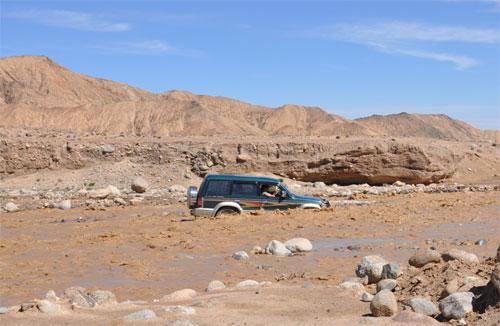As part of the plan of the major international cooperation project "The Asian monsoon - Environmental Evolution and Growth of the Tibetan Plateau," a Sino-U.S. scientist team completed field investigation to northern Tibetan Plateau, and returned to Institute of Earth Environment, CAS in Xi an early this week.
 |
|
Investigating Cars Wadding in Flood (photo credit to Chang Hong) |
According to project design, this year's field investigation focused on the northern Tibetan Plateau, including the Fenghuoshan group, Yaxicuo group, Wudaoliang sediments, as well as their chronology and deformation features. The team also collected samples from Cenozoic strata, and water & sediment samples from modern rivers and lakes at different heights.
"The Asian monsoon - Environmental Evolution and Growth of the Tibetan Plateau." Sino-U.S.project is led by Prof. AN Zhisheng, from Institute of Earth Environment, CAS and Prof. Peter Molnar, from University of Colorado at Boulder. This major project is jointly supported by China's National Natural Science Foundation of China (NSFC) and National Science Foundation (NSF) of the United States, which plan a major focus on understanding how high terrain like Tibet affects the hydrological cycle of eastern Asia, of China in particular, but also of other surrounding areas affected by monsoon rainfall.
The focus is not limited just to precipitation, but also address feedbacks between precipitation and vegetation, as well as what might be called the opposite of precipitation, loess deposition, for dust must be lofted from arid regions.
Tibetan Plateau receives frequent precipitation this year, the team encountered shower and hail every day. And destroyed roads made it worse, many pastures became swamp. The biggest difficulty of this investigation is however not science related, but trapped cars. Gladly with the joint efforts of the entire team, they finally completed the first year s field investigation tasks successfully.





